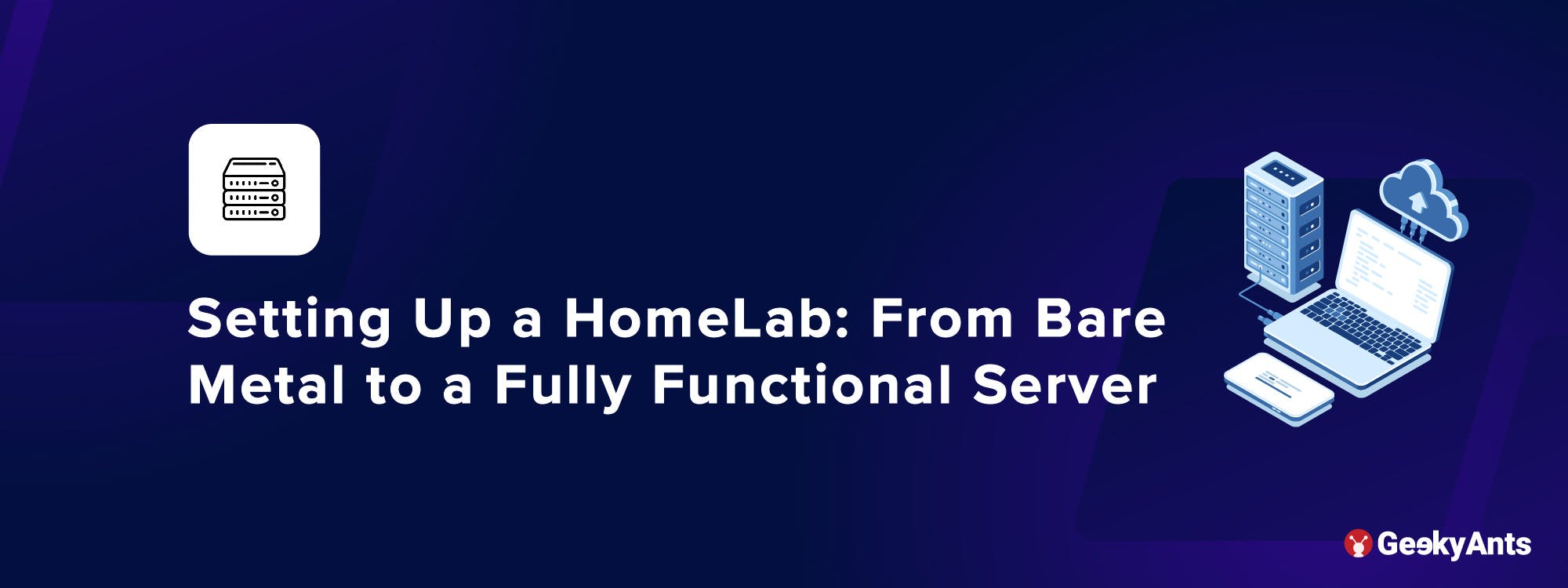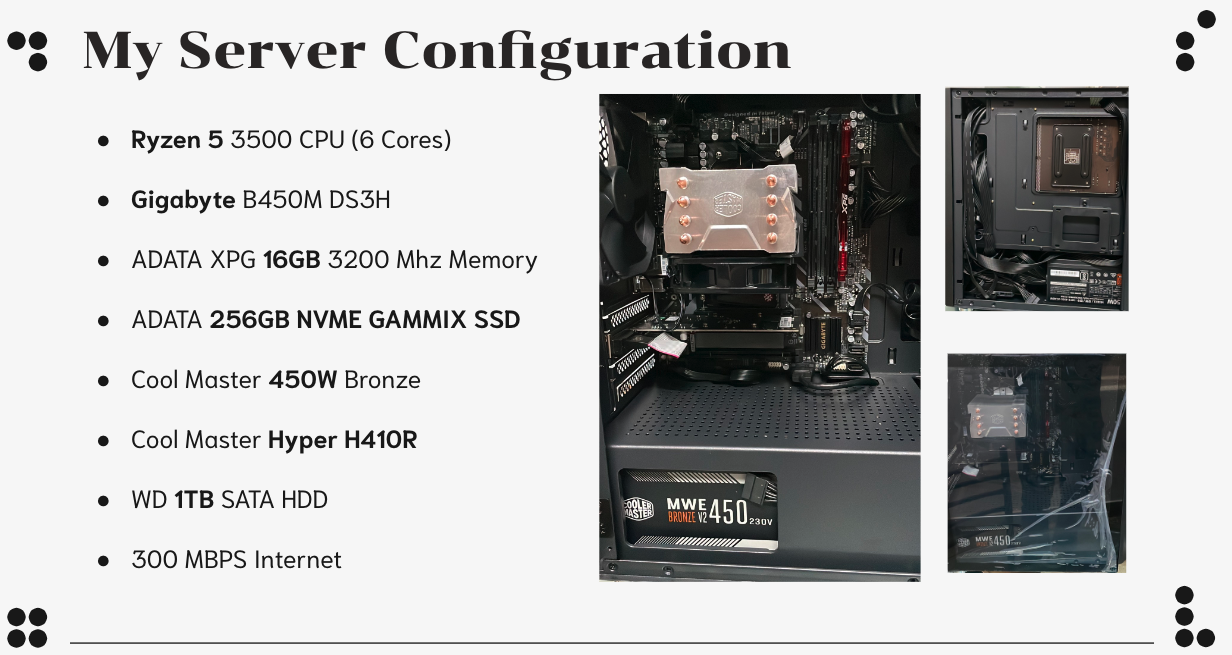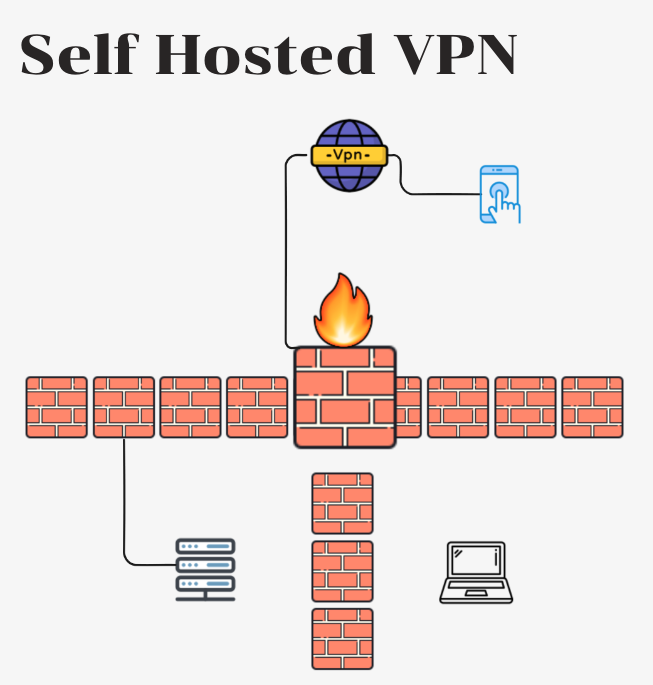Table of Contents
Setting Up a HomeLab: From Bare Metal to a Fully Functional Server
Author

Date

Book a call
Have you ever wondered what it takes to create your very own personal server right in the comfort of your own home? Welcome to the exciting world of HomeLab setup, where you transform a simple piece of hardware into a powerhouse server that can host your applications, data, and experiments.
The Million Dollar Question: Why Build a Home Server?
Before we dive into the nitty-gritty of HomeLab setup, let's address the burning question: why should you even consider building a home server in the first place? Well, besides the fact that it's an incredibly fun and enlightening endeavor, setting up a HomeLab offers a unique opportunity for programmers and tech enthusiasts to explore the intricate workings of systems without the abstractions of public cloud services.
But that's not all. The true magic lies in the ability to wield complete control over your data – where it resides, how it's safeguarded, and who gets access. Unlike relying on a public cloud, a HomeLab empowers you to manage every aspect of your data, ensuring unparalleled privacy and security.
Imagine this scenario: You're a tech-savvy student who lands a job at a startup. While you're proficient in programming, you're suddenly thrown into the world of serverless architecture and cloud functions. But when you need to connect to a database or troubleshoot a cold start issue, you find yourself drowning in a sea of unfamiliar terms like subnets and routing. Now, picture a different outcome. Armed with a solid understanding of traditional server setup, you seamlessly navigate these challenges, saving time and frustration.
So, What Exactly Is a Server?
At its core, it's a computer linked to the internet with added security measures. The crux of the matter is data control. Think about your Google Photos or other cloud services – you're at the mercy of their pricing and policies. With a HomeLab, you're the master of your data destiny. Take your Google Photos, for instance. You could sidestep the costs and limitations by setting up your own syncing solution on your Android or iPhone.
Hardware Configuration: Building the Foundation
As any journey begins, your HomeLab voyage commences with the hardware setup. You might recall your initial foray into the realm of HomeLabs with a humble Raspberry Pi. While the Pi is fantastic for light experimentation, you'll soon realize the need for more power and capabilities.
The hardware essentials for a solid HomeLab foundation include:
- Multi-core CPU
- DDR4 RAM
- SSD or HDD for storage
- Router with robust port forwarding and firewall capabilities
Consider options like PF Sense or OpenWRT for your router, but even a decent consumer-grade router can suffice for basic port forwarding and firewall setups. Aim for a minimum internet connection speed of 20 Mbps, and don't underestimate the importance of a quality heat sink to keep your server running smoothly.

“I opted for an AMD Ryzen 5 3500 CPU paired with a Gigabyte motherboard. This setup provides room for upgrades while remaining cost-effective. With 16 GB of RAM and an NVMe SSD for booting, my server strikes a balance between performance and flexibility. I've also invested in a top-notch cooling solution, the Cooler Master Hyper 410R, to ensure optimal thermal management.”
Software Stack and Configuration: Unleash the Power of Docker
Now that we've got the hardware squared away, it's time to delve into the software realm. While it might be tempting to install everything directly on your server, a containerized approach offers flexibility, ease of management, and isolation. Enter Docker, the hero of modern application deployment.
Docker containers provide an array of benefits:
- Universally compatible across major Linux distributions
- Isolated service file systems, preventing clutter
- Simplified removal of data volumes and images
- Self-contained environments, reducing dependency headaches
- Support for private Docker container registries
By containerizing your applications, you avoid the pitfalls of traditional installation methods and embrace a more streamlined, organized approach.
Networking & Reverse Proxy Setup: Shielding Your Server
Now that your software stack is locked and loaded, it's time to address the crucial matter of networking and security. Your HomeLab is your digital fortress, and guarding its gates is of paramount importance.
You have two primary options for exposing your services: a self-hosted VPN or the ingenious TailScale. A self-hosted VPN provides a secure tunnel for remote access, with a firewall and subnet configuration adding an extra layer of protection. On the other hand, TailScale offers zero-configuration magic, effortlessly connecting your devices through a lightweight VPN.

Segmenting your network into subnets and implementing conditional port forwarding ensures that only legitimate traffic enters your fortress. CloudFlare's DNS service can act as your sentinel, allowing only authorized requests to pass through.
Security Measures: Fortifying Your HomeLab
With the foundation and networking in place, it's time to don your virtual armor and fortify your HomeLab against potential threats. Implement an Intrusion Detection System (IDS) and Intrusion Prevention System (IPS) to monitor, alert, and even block suspicious activity. For an extra layer of security, configure UFW and Fail2Ban to bolster your Linux firewall capabilities.
Remember, security is an ongoing endeavor. Regularly apply security patches, perform maintenance, and manage your temperature control to prevent overheating and system failures. A silent and efficient server setup will ensure your HomeLab runs smoothly and remains uninterrupted, even if someone inadvertently decides to unplug it.
Exploring Possible Use Cases: Unleash Your Creativity
Your HomeLab is now a fully operational base of operations, and the possibilities are endless. Let your imagination run wild as you explore an array of use cases:
- Offline Language Model Training: Build your own compact language model for processing and analyzing PDFs using an offline LLM like LaMini LM Mode.
- Remote Development Environment: Access your personal development environment from anywhere by setting up a remote code server, enabling you to code and experiment from your browser.
- Self-Hosted Services: Liberated from third-party providers, you can host your own Discord, Telegram, or even an Alexa bot.
- Media Streaming: Turn your HomeLab into a Plex Media Server, providing seamless access to your media collection.
- Video Conferencing: Ditch the mainstream video conferencing platforms and set up your own Zoom alternative using solutions like Jitsi.
- Data Backup and Insights: Utilize tools like Borg Backup and ClickHouse to create robust backup solutions and gain valuable insights from your data using tools like Metabase.
In Conclusion
Setting up a HomeLab from scratch is not just a technical achievement; it's an empowering and enlightening journey that grants you unparalleled control over your digital domain. From the hardware configuration to the software stack, networking setup, and security measures, every step of the process contributes to your mastery of the art of HomeLab creation.
So, are you ready to embark on this thrilling adventure? Dust off that Raspberry Pi or power up that multi-core CPU – your HomeLab odyssey awaits!
Watch the full address here 🔻
Dive deep into our research and insights. In our articles and blogs, we explore topics on design, how it relates to development, and impact of various trends to businesses.





